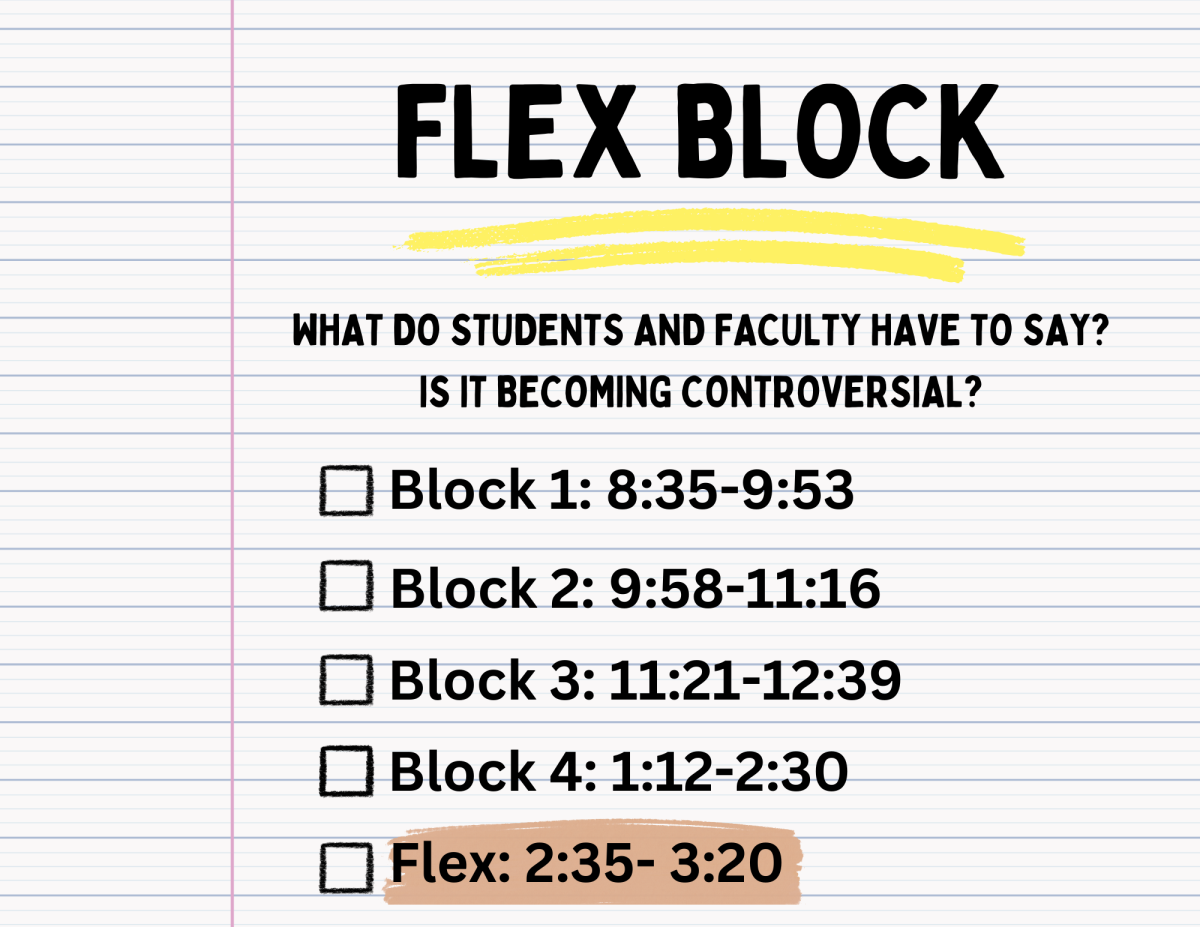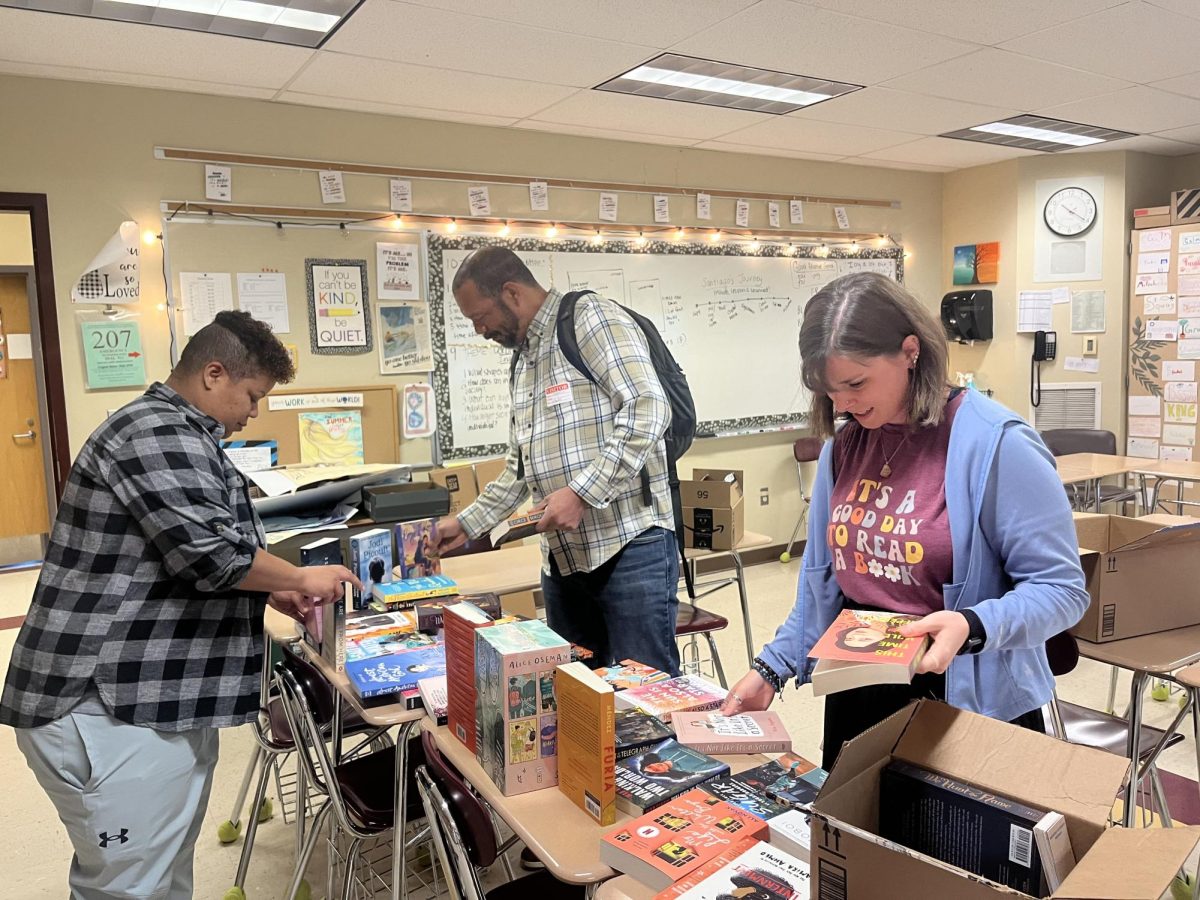Your fourth block class just ended at 2:35, and you feel relief that the school day is over. However, as the bell rings, you realize the school day is not over as you rush to the last period of the day: Flex.
The debate and controversy surrounding Flex block at Portsmouth High School has been a constant topic of discussion among many students and teachers. Flex block was designed to provide additional support from teachers to students by giving extra help during that time, or using it as a study block.
Flex block, which is part of our school’s schedule, runs from 2:35 to 3:20 p.m. every Tuesday through Friday. Detailed information about Flex block, including its purpose and curriculum, can be accessed on the Google Site for Flex and Advisory.
Originally, Flex was called TASC which was created in the 2017-2018 school year that was after block two and before lunch. In 2021-2022, it was moved to the end of the day and renamed Flex.
“Department teams should collaborate to find new and creative ways to support groups of students in specific areas by mapping out schedules by content area based on knowledge of focused support needs,” according to the PHS Flex and Advisory site.
During Flex block, PHS’s faculty and staff should provide enrichment opportunities, be a connection for students, and be someone that students feel comfortable going to.
While many students are hoping that our administration will get rid of Flex, it wouldn’t mean that students could leave after their fourth block. According to the New Hampshire Department of Education, students are required to have 990 hours of instruction.
During Advisory on Mondays, students are required to schedule themselves in different locations throughout the week for Flex. Mr. Chavez, who is in charge of making sure unflexed students are Flexed, gets a list of unscheduled students every day and has to make sure everyone is scheduled by 2:00 p.m. He finds that there are issues with the way students are required to schedule and the overall structure of Flex.
“I do not believe Flex is being used to its best advantage, “said Chavez. “The idea of Flex I like, it lets students be flexible and go where they want to go. It lets teachers pull kids in that need help, and it lets teachers make connections. The problem becomes students that are responsible for scheduling themselves and falls back on me to make sure they end up in a class.”
Many students have also expressed their concerns and opinions about Flex as the school year comes to an end. Mason Patterson, a junior at PHS, agrees that students shouldn’t have to stay for flex.
“90% of the time, nobody does work. Everyone is tired from the school day and wants to leave. Some students find that their home is a more comfortable workspace,” said Patterson.
Emma Lander, a freshman at PHS, shares similar views and even feels frustrated that our administration has done nothing to change or eliminate Flex.
“Students shouldn’t be required to stay for flex because some people have jobs that they go to right after school and internships. I normally leave and walk around,” said Lander.
On the other hand, some faculty and administration see many benefits of Flex blocks. Patrick Ganz, an English teacher at PHS and part of the original group that created Flex, believes that it is beneficial for students.
“I was in the original group in 2015, and we were really excited about it. We felt that it would bring a whole bunch of innovative things,” said Ganz.
Ganz believes that certain parts of Flex are helpful for students but also recognizes that it also has its negatives, and many might view it as taking a lot of time out of academic learning in the schedule.
“I think certain parts of it are necessary; there are components of it that are definitely essential. I think we all find that we need to use it in some way, and it’s a good way to connect and a good way to assist students who are struggling a little bit, ” said Ganz.
Shelagh St. Laurent, the Director of Curriculum and instruction at PHS, works with teachers on how they are using flex block to support students. She believes that many teachers find Flex a helpful time to check in with their students and get support. She also has similar opinions to that of Mr. Ganz about why Flex is an important part of the day.
“I think that many teachers find Flex a helpful time to check in with their students. It can become a challenge to support a large number of students within a short window of time, each with different learning goals. It works best when the time is strategically designed, ” said St. Laurent.
Many students hope to see a change around Flex block in the future, and some have even expressed their opinions about Flex to teachers and friends. If you are looking for more information about Flex, please visit the Office of Curriculum and Instruction or visit the Google Site.








